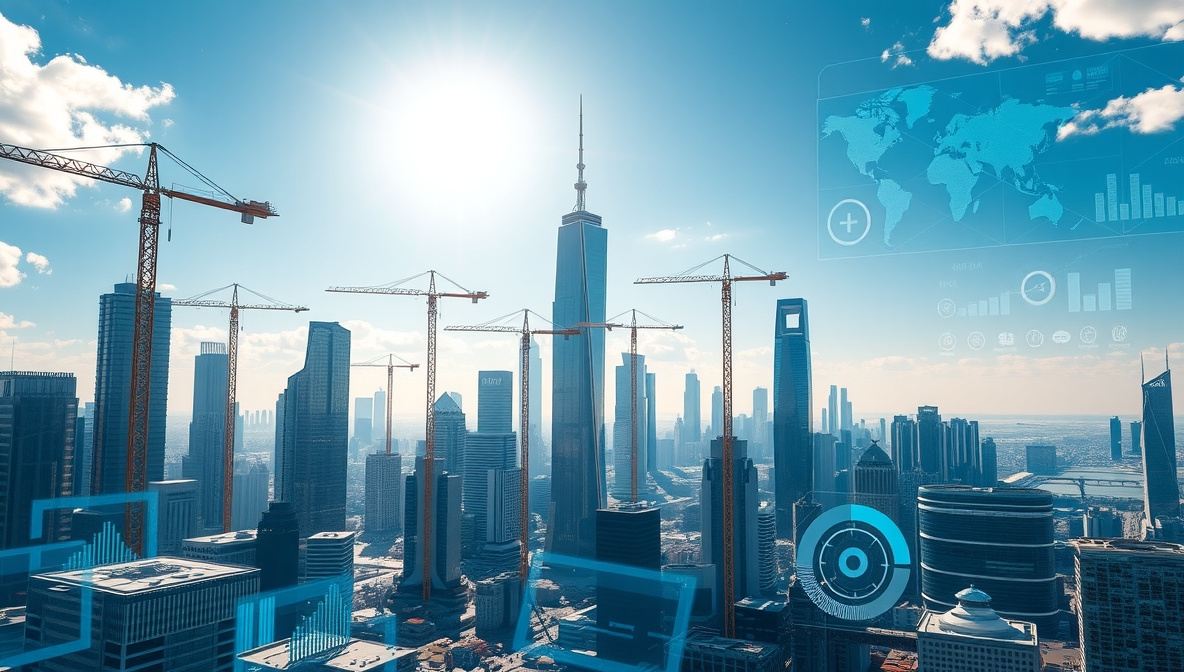
Did you know you could start the building process with just a voice command? Imagine launching a construction project by telling an app, “Design a 1,500-square-foot home featuring two bathrooms, 17 solar panels, and two 8×8 sliding glass doors oriented southeast.” In seconds, the app would generate a meticulously detailed, high-definition architectural drawing ready for implementation.
You could also ask an app, “Which three foremen should I use during the winter months to reduce the chances of an accident by at least 20%?��� In a matter of moments, the app could solve this and other staffing challenges.
AI has quickly matured from a novelty on the silver screen to an everyday tool used in various industries, including construction. Here’s a breakdown of how AI is remodeling the construction industry.
Reducing Construction Costs with AI
AI can take every cost associated with a construction project, juxtapose it alongside each project’s requirements, and then tell you how much money you can save.
For example, suppose you have two projects going simultaneously. One is for a long-standing commercial client with whom you have a great relationship. The other is for a new client, and you need to make sure their project doesn’t creep over budget. And this client has a tight budget.
Your AI can access a database with the hourly rates of all your forepersons, regular workers, and quality assurance inspectors. Some of your crew members are seasoned vets who get paid accordingly. Others are younger, super-smart, and effective but are newer to the industry, so they get paid less.
With generative AI (like ChatGPT) integrated with your data set and analytical algorithm, simply say, “I need one foreperson, eight workers, and one inspector for a job that’s going to take eight weeks, and I can’t spend more than $70,000 on labor. Who should I assign?”
In a few seconds, your AI can give you an answer and the reasoning behind its choices. It may take hours to manually scour through your payroll data and run the numbers in dozens of scenarios. AI does it instantly.
Improving Productivity
As mentioned at the outset, AI can significantly reduce your design time by designing buildings based on simple commands, such as, “Design a 20×12 landing that can support at least 6 tons of weight.”
However, generative AI applications like this represent only a small fraction of tools that boost productivity.
For instance, Japanese construction company Shimizu has already deployed a robotic welder that works alongside humans in the building process1. It has six arms that work together to secure more welds in less time.
On the managerial side, builders have been using AI to jolt productivity by automating time-consuming or tedious processes. For example, Kiewit, a construction firm based in Nebraska, leverages AI in several processes, from estimating to scheduling to predictive analysis2.
Rather than having a project manager spend hours developing an accurate estimate, Kiewit hands the process over to artificial intelligence. In a matter of moments, the system can produce a reliable estimate and details justifying each cost.

Making Construction Sites Safer
AI has been pivotal in protecting the health and lives of construction workers, as well as those they build for.
One way is to use intelligent tools, which are often battery-powered Internet of Things (IoT) or Industrial Internet of Things (IIoT) devices. These devices are connected to the Internet or an internal network and provide data to an AI system. Using sensors placed throughout a construction site, for instance, site managers can see how many people have entered a specific area. If that number crosses a safety threshold, the system can automatically alert the manager of a potential issue.
Similarly, if temperatures on top of a roof were to climb too high, threatening to make newly installed shingles or other components unsafe, the system can let decision-makers know. It can also indicate when conditions are safe again without human input.
Managers can give employees fitness trackers that tell them when blood pressure, body temperature, heart rate, and other biometrics reach dangerous levels to reduce the risk of fatigue or health issues resulting in injury.
Using sensors placed throughout a construction site, for instance, site managers can see how many people have entered a specific area. If that number crosses a safety threshold, the system can automatically alert the manager of a potential issue.
Similarly, if temperatures on top of a roof were to climb too high, threatening to make newly installed shingles or other components unsafe, the system can let decision-makers know. It can also indicate when conditions are safe again without human input.
To reduce the risk of fatigue or health issues resulting in injury, managers can give employees fitness trackers that tell them when blood pressure, body temperature, heart rate, and other biometrics reach dangerous levels.
Only the Beginning: The Future of AI in Construction Is Bright
Thanks to tiny semiconductors, AI can execute real-time, high-speed computing to power wearables, smart homes, smart buildings, and other applications. Even though generative AI has already taken the creative world by storm, its potential in construction is still relatively untapped. For example, it would be relatively straightforward to design a system where you simply say to an AI, “Manage this building’s energy efficiency in a way that saves the end user 8% per year.”
While project managers have long been able to walk through the digital versions of projects using virtual reality, augmented reality is poised to enable even more design and safety improvements. For example, you could put on an augmented reality headset. As you enter a building, you see a life-sized, 3D representation of the plans superimposed on what your workers have built. If the location of a beam will interfere with the plumbing for a wet bar, for instance, you can spot the error right then and there. Then you can have your team adjust — long before the plumbing gets installed, or any drywall goes up.
The key to taking advantage of the artificial intelligence boom is to let your company evolve alongside it. Look for ways AI can save you time, money, and effort, as well as improve safety. By implementing AI solutions, you position your organization to take advantage of its long-term benefits.
How Ambiq Contributes
Voice integrated technology, smart sensors that detect equipment failure, or actively monitoring a foreman’s health all can benefit from an embedded microcontroller that enables energy efficient AI. Ambiq, is a leading developer of low power system-on-chip (SoC) and microcontrollers (MCU) that enable edge AI applications such as industrial sensors, voice integrated assistants, and vitals monitoring devices. Using Ambiq, manufacturers can use the technology necessary to reduce construction costs, maintain efficiency, and look out for their workers safety. Visit Ambiq’s applications page for more use cases.
References
1Leading construction companies in the artificial intelligence theme | May 22, 2023
2 How Artificial Intelligence and the Digitization of Knowledge is Driving Contractor Efficiency


